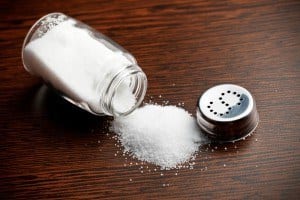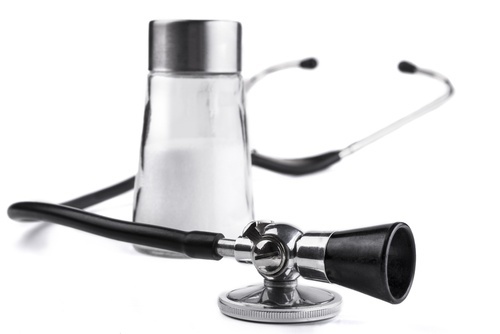A recent CDC (Centers for Disease Control) study found about 90% of Americans eat roughly 1.5 times more sodium than recommended.

According to new dietary guidelines issued by the federal government, sodium levels should less than 2,300 mg per day instead of the 3,400 mg consumed by the average American each day.
High sodium levels can have serious health impacts, especially on your heart. Reducing sodium in our diets reduces the risk of high blood pressure and heart disease.
Wondering how to eat less sodium, read these 5 ways to reduce the sodium in your diet to reduce your risk for high blood pressure and heart disease.
Here are 5 ways to Eat Less Sodium:
1. Look At Nutrition Labels Before You Buy Food
We live in a time when pre-packaged meals and quick dishes we can purchase from the grocery store’s freezer section have become insanely popular. But most people don’t take the time to look at the label and see what they’re actually eating.
To eat less sodium, look at nutrition labels before you purchase any food. Pre-packaged meals, crackers, cookies and chips rapidly add sodium to your diet.
Most Americans love pizza. We especially love pizza we can just throw in the oven and prepare at home, but it’s that kind of food seriously raising the amount of sodium you’re eating.
Take for example a frozen CPK BBQ Chicken Pizza at the grocery store. The nutrition label reveals 640 mg of sodium in just a third of the pizza. That’s 1,920 mg in the entire pizza–more than half of the recommended daily amount.
If you are determined to stick to frozen foods, look for “reduced sodium” and healthier levels of sodium on the labels. Taking the time to read what’s in the food you eat will help you eat less sodium even if you’re stuck eating a pre-packaged or frozen meal.
2. Cook at Home More Often
Cooking at home is one of the best ways to ensure a low sodium diet. When you cook at home, you are more likely to buy fresher ingredients that are healthier and lower in sodium.
Cooking at home also gives you control to monitor everything added to your food, unlike at a restaurant where the food is prepared out of your sight.
Restaurants generally pack on the salt and then we tend to add more anyway. You can eat less sodium from a home-cooked meal than going out for dinner or purchasing frozen dinners.
3. Keep a Nutrition Journal
After you eat, logging your meals on apps like MyFitnessPal is the easiest way to keep track of calories and nutritional information from your meals.
You can keep an accurate watch on your sodium intake and how many milligrams you have left for the day. Knowing exactly how many milligrams you’re at will help you eat less sodium throughout the day.
4. Substitute Herbs and Spices for Salt
Many potentially healthy meals turn out not-so healthy by adding too much salt. Broccoli and carrots only taste good to many if they are cooked and salt is added. That baked potato was a healthy option before copious amounts of salt were added to it.
Try those veggies and maybe less desirable tasting food with herbs like garlic, chives, or rosemary. Each have tasty, strong flavors that also have their own health benefits, and help you eat less sodium.
5. Choose Unsalted Nuts
There are hundreds of different options of how nuts are flavored and cooked. Most of them include a very high sodium content.
Nuts often taste better to us if they are smoked or salted, enriching the flavor of the nut. Planter’s Regular Peanuts have 150 mg of sodium in just 16 peanuts compared to 5 mg of sodium in their Unsalted version.
Almonds, cashews, peanuts, and pistachios are all rich in healthy fatty oils and are a great snack in between meals when left unsalted and in their raw form.
Besides nuts, you can enjoy other popular snacks in a healthier way including popcorn if you’re skipping all the added salt.
Eating less sodium means being careful with food choices and learning to adapt for foods like nuts and vegetables.
Less sodium intake per day will reduce your risk of blood pressure, or lower it if it is currently higher than it should be.
For additional help to keep your heart healthy, add L-Arginine to your morning routine to lower blood pressure.
One heart healthy choice will lead to another and you can continue to eat less sodium and overcome cravings for salted foods.
References
http://www.cpkfrozen.com/pizza/crispy-thin-crust/15/bbq-recipe-chicken

